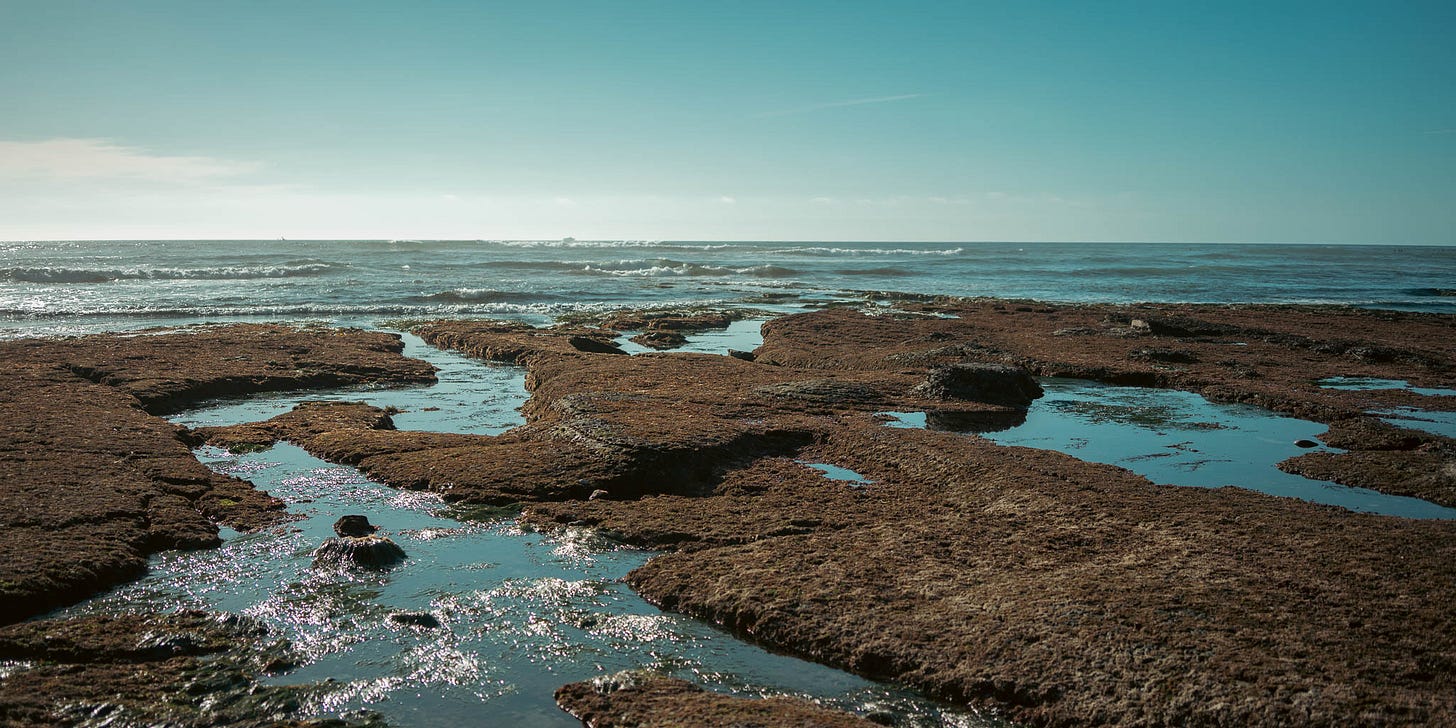Why does the ocean smell like ocean?
The ocean has a distinctive smell, easily recognizable when the wind shifts onshore and you get past the sunscreen-lathered tourists on the beach. I have to admit this article was inspired by a two-year-old wetsuit - I know why that one smells. But the ocean's scent, sometimes fresh and other times like upstream compost, has a fascinating origin.
Much of the smell comes not from the water itself but from the living creatures within it. The ocean teems with life, especially in the nearshore region where light penetrates throughout the water column. In Southern California, the chilled waters and abundant sun create perfect conditions for thriving kelp forests.
Growing on the surface of kelp are bacteria from the genus Brevibacterium. These organisms feed off amino acids produced at the surface of kelps and other seaweeds, preferring temperatures similar to their landlords. They produce a chemical called dimethylsulfoniopropionate (DMSP), a molecule that organisms have evolved to withstand harsh conditions in the salty ocean. This molecule breaks down into dimethyl sulfide (DMS) when the organism that makes it dies.

DMS is a volatile compound, meaning it easily evaporates into the air. After an organism dies, whether bacteria on kelp or various phytoplankton, DMS releases into the water and then evaporates. From there, it travels to your nostrils - or those of birds, which have learned to track this smell since it indicates better hunting waters.
DMS plays another interesting role beyond being a primary source of ocean smell. It helps make clouds over the ocean. Water droplets, which form clouds, develop when water molecules cluster together. These droplets form more easily when they have a molecule to stick to, and DMS serves this purpose. While the air over land has many molecules that do this job (smoke, dust, vehicle emissions), DMS is one of the primary cloud-formers over the ocean because DMS-producing phytoplankton are ubiquitous.

Another source of ocean smell comes directly from seaweeds through their release of iodine. When exposed at lower tides, seaweeds secrete iodine to defend against air and sunlight. More iodine releases when seaweeds experience stress, which explains why summer ocean smell can become particularly rank.
While biology causes much of the smell, other molecules in the water contribute. Bromine-based compounds in the water, pushed into the atmosphere as ocean spray, react with air and produce an odor we can detect. The salts in the water, though easily tasted, remain generally odorless.
Every coastline has its distinctive mix of smells since different environments contain various sources and ratios of these compounds. Day-to-day, the smells at your break will change because they come from a constantly evolving ecosystem.
So go take a whiff, hog some cloud-forming molecules for yourself, and thoroughly dry out your wetsuit when possible.
Further Reading:


An interesting read - I remember when we traveled to the coast we had bets who could smell the sea first. Always thought it was related to the salt in the water.
Thanks for sharing : )